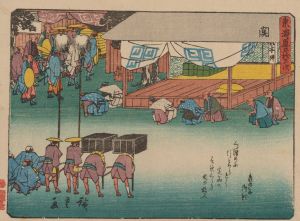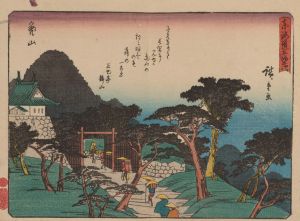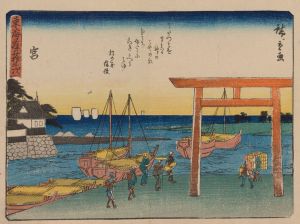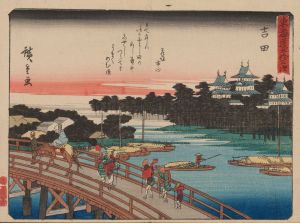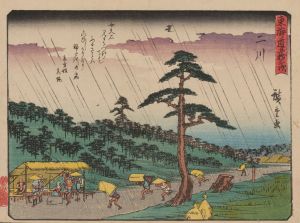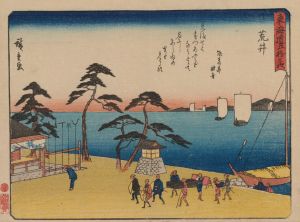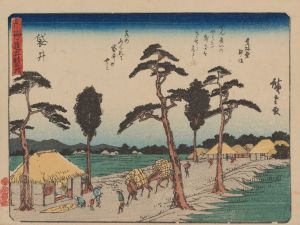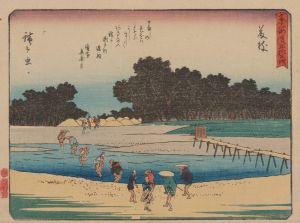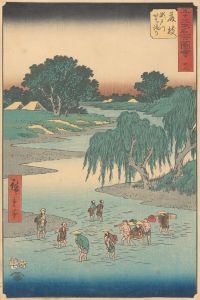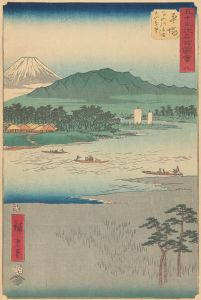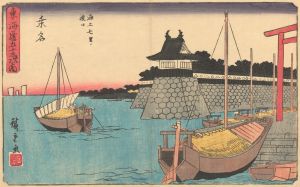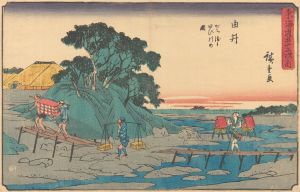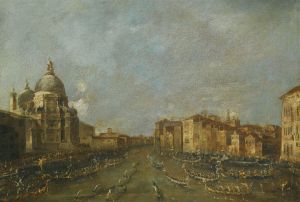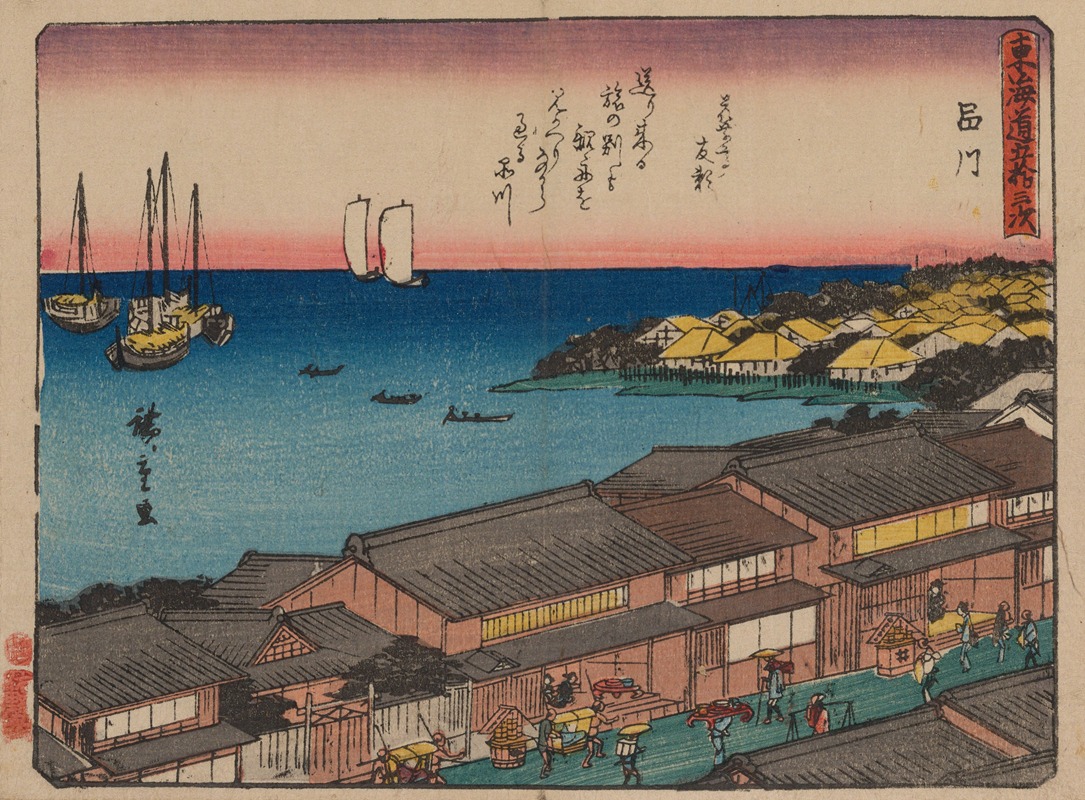
Tokaido gojusantsugi, Pl.02
A hand-painted replica of Andō Hiroshige’s masterpiece Tokaido gojusantsugi, Pl.02, meticulously crafted by professional artists to capture the true essence of the original. Each piece is created with museum-quality canvas and rare mineral pigments, carefully painted by experienced artists with delicate brushstrokes and rich, layered colors to perfectly recreate the texture of the original artwork. Unlike machine-printed reproductions, this hand-painted version brings the painting to life, infused with the artist’s emotions and skill in every stroke. Whether for personal collection or home decoration, it instantly elevates the artistic atmosphere of any space.
"Tokaido gojusantsugi, Pl.02" is a woodblock print by the renowned Japanese ukiyo-e artist Andō Hiroshige. Hiroshige, born in 1797 and active until his death in 1858, is celebrated for his landscapes and depictions of the Tokaido Road, a crucial route connecting Edo (modern-day Tokyo) to Kyoto during the Edo period in Japan.
This particular print is part of Hiroshige's famous series "The Fifty-three Stations of the Tokaido" (Tokaido gojusan-tsugi), which he created following his journey along the Tokaido Road in 1832. The series consists of 55 prints, including the starting point in Edo, the 53 post stations, and the terminus in Kyoto. Each print in the series captures the unique character and scenery of the respective station.
Plate 02 (Pl.02) in the series depicts the Nihonbashi Bridge in Edo, the starting point of the Tokaido Road. The Nihonbashi Bridge was a significant landmark in Edo, serving as the point from which distances to other locations in Japan were measured. Hiroshige's portrayal of Nihonbashi is notable for its dynamic composition and attention to detail, capturing the bustling activity of the area.
In the print, the bridge is shown crowded with people, including travelers, merchants, and laborers, all engaged in their daily activities. The scene is animated with a sense of movement and purpose, reflecting the importance of Nihonbashi as a commercial and social hub. The background features the rising sun, symbolizing the beginning of the journey along the Tokaido Road.
Hiroshige's use of color and perspective in this print is exemplary of his style. The vibrant colors and careful gradation of tones create a sense of depth and atmosphere. The composition is balanced, with the bridge forming a strong diagonal line that guides the viewer's eye through the scene. The detailed depiction of the figures and their activities adds a layer of realism and immediacy to the print.
Hiroshige's "The Fifty-three Stations of the Tokaido" series was highly popular during his lifetime and remains one of his most celebrated works. The series not only showcases his artistic skill but also provides a valuable historical record of the Tokaido Road and the various post stations along the route. Each print in the series offers a glimpse into the daily life, culture, and landscape of Edo-period Japan.
"Tokaido gojusantsugi, Pl.02" is a prime example of Hiroshige's ability to capture the essence of a place and moment in time. His work continues to be studied and admired for its artistic merit and historical significance. The print is part of numerous collections and has been exhibited in museums around the world, contributing to Hiroshige's enduring legacy as one of Japan's greatest ukiyo-e artists.





